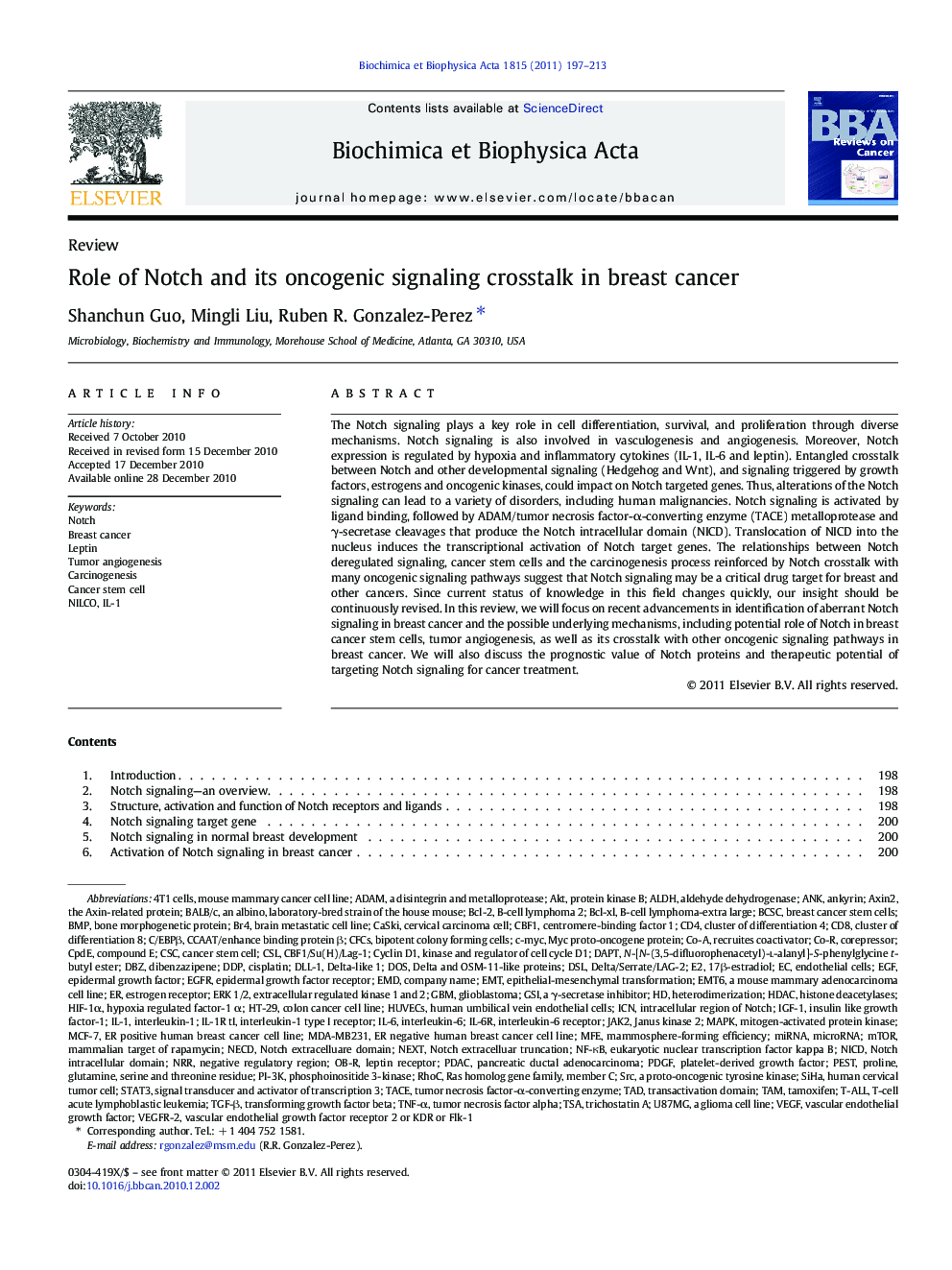| Article ID | Journal | Published Year | Pages | File Type |
|---|---|---|---|---|
| 10895623 | Biochimica et Biophysica Acta (BBA) - Reviews on Cancer | 2011 | 17 Pages |
Abstract
The Notch signaling plays a key role in cell differentiation, survival, and proliferation through diverse mechanisms. Notch signaling is also involved in vasculogenesis and angiogenesis. Moreover, Notch expression is regulated by hypoxia and inflammatory cytokines (IL-1, IL-6 and leptin). Entangled crosstalk between Notch and other developmental signaling (Hedgehog and Wnt), and signaling triggered by growth factors, estrogens and oncogenic kinases, could impact on Notch targeted genes. Thus, alterations of the Notch signaling can lead to a variety of disorders, including human malignancies. Notch signaling is activated by ligand binding, followed by ADAM/tumor necrosis factor-α-converting enzyme (TACE) metalloprotease and γ-secretase cleavages that produce the Notch intracellular domain (NICD). Translocation of NICD into the nucleus induces the transcriptional activation of Notch target genes. The relationships between Notch deregulated signaling, cancer stem cells and the carcinogenesis process reinforced by Notch crosstalk with many oncogenic signaling pathways suggest that Notch signaling may be a critical drug target for breast and other cancers. Since current status of knowledge in this field changes quickly, our insight should be continuously revised. In this review, we will focus on recent advancements in identification of aberrant Notch signaling in breast cancer and the possible underlying mechanisms, including potential role of Notch in breast cancer stem cells, tumor angiogenesis, as well as its crosstalk with other oncogenic signaling pathways in breast cancer. We will also discuss the prognostic value of Notch proteins and therapeutic potential of targeting Notch signaling for cancer treatment.
Keywords
CSCEGFRSTAT3ALDHNF-κBGSIEGFIL-6IL-1EMDTSAMCF-7mTORHUVECSMFEBcl-2HDACNRRSRCCFCsDSLIGF-1GBMJAK2HIF-1αDAPTBcl-xLVEGFR-2PDGFCD8NICDIL-6RTACEERK 1/2Cyclin D1CD4Janus Kinase 2PI-3KDBZAxin2ICNANKHT-29CBF14T1 cellsCSLBCSCDDPU87MGMDA-MB231RhoCCorepressorSiHaCaSkiOb-RNegative regulatory regionTGF-βNECDPDAC17β-estradiolBALB/cc/ebpβc-MycMAPKN-[N-(3,5-difluorophenacetyl)-L-alanyl]-S-phenylglycine t-butyl esterADAMPancreatic ductal adenocarcinomaPestaldehyde dehydrogenasetumor necrosis factor-α-converting enzymetumor angiogenesisAnkyrinAktInsulin like growth factor-1interleukin-6interleukin-1Next T-ALLTADTAMtamoxifenTransforming Growth Factor BetaEpithelial-mesenchymal transformationa disintegrin and metalloproteaseTrichostatin Atumor necrosis factor alphaEMTColon cancer cell lineCluster of differentiation 4DOStransactivation domainNotch intracellular domaindelta-like 1Breast cancerCarcinogenesisHuman umbilical vein endothelial cellsBreast cancer stem cellsEndothelial cellscancer stem cellcisplatinepidermal growth factorVascular endothelial growth factorVascular Endothelial Growth Factor (VEGF)platelet-derived growth factorTNF-αphosphoinositide 3-kinaseB-cell lymphoma 2B-cell lymphoma-extra largeT-cell acute lymphoblastic leukemiaLeptinsignal transducer and activator of transcription 3BMPMicroRNAMiRNAHeterodimerizationNotchmammalian target of rapamycinhistone deacetylasesBone morphogenetic proteinprotein kinase Bmitogen-activated protein kinaseGlioblastomaEstrogen receptorInterleukin-6 receptorEpidermal growth factor receptorLeptin receptor
Related Topics
Life Sciences
Biochemistry, Genetics and Molecular Biology
Cancer Research
Authors
Shanchun Guo, Mingli Liu, Ruben R. Gonzalez-Perez,
